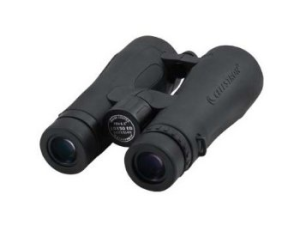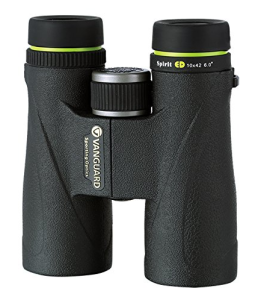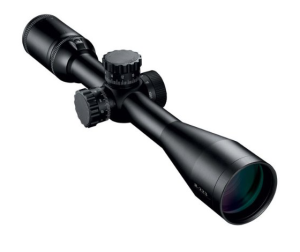The Celestron Granite 10×50 binoculars provide outstanding optical magnification viewing possibilities in a stylish and elegant case. Providing up to 50 times magnification in all weather conditions, the Celestron Granite binoculars are perfect for bird watchers, hunters and lovers of the great outdoors.
Features
 The Celestron Granite binoculars are nitrogen-purged, meaning the inside is both waterproof and fogproof. The lenses are equipped with broadband multi-coatings for maximum light transmission throughput with the highest levels of contrast. The precision Celestron Granite coatings render the view in high fidelity natural colors with lush, full-spectrum color saturation. The lenses are BaK-4 Prisms with the legendary Celestron Granite dialectic high reflectivity and phase coatings.
The Celestron Granite binoculars are nitrogen-purged, meaning the inside is both waterproof and fogproof. The lenses are equipped with broadband multi-coatings for maximum light transmission throughput with the highest levels of contrast. The precision Celestron Granite coatings render the view in high fidelity natural colors with lush, full-spectrum color saturation. The lenses are BaK-4 Prisms with the legendary Celestron Granite dialectic high reflectivity and phase coatings.
The Celestron Granite 10×50 come stylishly encased in a protective layer of high quality rubber, which helps improve ergonomic features and reduces slipping. Focus knobs, a diopter ring and twist-up eyecups are fabricated of quality metal to ensure durability and precision movement for viewing adjustments.
Technical Details
The weight of the Celestron Granite 10×5 binoculars is exactly three pounds, providing the perfect balance between heft and portability. The binoculars measure 6.6 by 2.4 by 5.2 inches. The Celestron Granite comes in a matte black finish. Accessories such as straps and tripod adapters are sold separately.
My Opinion
I am a retired NASA photographer and an avid birdwatcher, and I’ve been searching for the perfect pair of binoculars. After my last pair cracked during an adverse weather event, I decided to do my research and comb the market for the best binoculars I could find. When I tried the Celestron Granite, I was blown away by how many light years ahead of my old binoculars these beauties were. Without trying to make a pun, I can honestly say I have never seen a pair of binoculars that can touch the Celestron Granite.
The view is sharp and crisp even during side to side motion. I especially enjoyed the brilliant field of view, which had full spectrum saturation and high contrast. Even objects as close as six feet away were a marvel to behold, and I was stunned by how much better the view was through the binoculars than with the naked eye.
Although I wear thick glasses, I prefer to look through binoculars without them. Using the twist-up eyecups, I was quite impressed at how comfortable a view I achieved with the Celestron Granite. I was very pleased at how the combination of multi-coating and specialized ED glass ensure that colors stay in their register. I have successfully used these binoculars to track birds in flight, and found the adjustment knobs to allow fantastic control over focal depth, allowing me to keep the image crystal clear.
Even just held in the hands, the Celestron Granite has a solid heft, and the rubber coating is pleasant to the touch. The balanced measurements make these binoculars convenient and quite easy to carry. The open bridge on the body allows me to get a very secure grip and a comfortable position next to my eyes. I liked how the magnesium body feels light but reassuringly solid.
Once I had adjusted the interocular distance and correctly set the diopter to suit my viewing needs, I headed into the field to put these binoculars through their paces. Whether engaged in bird watching, wildlife viewing or enjoying sporting events, I love my Celestron Granite binoculars. Their light weight and excellently balanced body make it easy for me to hold the binoculars for long periods of time.
Final Impressions
Bird watchers, nature lovers, hunters, sporting enthusiasts and people watchers will greatly enjoy the Celestron Granite 10×50 binoculars. With smooth, precision adjustments and the latest breakthrough in optical technology, the Celestron Granite binoculars provide optimum viewing magnification. Rugged enough to be used outdoors, the precision engineering and nitrogen-purged interior provide crisp magnification under all atmospheric conditions.

 Does that make
Does that make  A scope with the most powerful lens in the world is no good if you can’t see through it properly. I love the M-223 with its four inches of non-critical eye relief, which gives me an amazingly clear sight without risking recoil damage to my face. The ocular lens on the M-223 is huge, which gives me a super bright high-resolution view. I also like the four-time zoom range, which helps me quickly identify targets in the field.
A scope with the most powerful lens in the world is no good if you can’t see through it properly. I love the M-223 with its four inches of non-critical eye relief, which gives me an amazingly clear sight without risking recoil damage to my face. The ocular lens on the M-223 is huge, which gives me a super bright high-resolution view. I also like the four-time zoom range, which helps me quickly identify targets in the field.